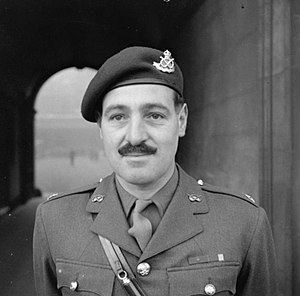Robert Henry Cain | |
|---|---|
 Robert Henry Cain at his VC investiture | |
| Born | 2 January 1909 Shanghai, China |
| Died | 2 May 1974 (aged 65) Crowborough, Sussex |
| Buried | Braddan Cemetery, Isle of Man |
| Allegiance | |
| Service | |
| Years of service | 1928–1945 |
| Rank | Major |
| Service number | 129484 |
| Unit | Royal Northumberland Fusiliers attached South Staffordshire Regiment |
| Battles / wars | Second World War |
| Awards | Victoria Cross |
| Relations | Finlo Cain (son) Rosemary Diplock (daughter) Helena Cain (daughter) Frances Cain (daughter) |
| Other work | Worked for Royal Dutch Shell |
Major Robert Henry Cain VC TD (2 January 1909 – 2 May 1974) was a British Army officer who was a recipient of the Victoria Cross, the highest award for gallantry in the face of the enemy that can be awarded to British and Commonwealth forces.
Cain grew up on the Isle of Man and joined the Honourable Artillery Company in 1928. After working overseas he was given an emergency commission into the Army in 1940. He transferred to the South Staffordshire Regiment in 1942, and joined their 2nd Battalion, part of the British 1st Airborne Division. He saw action during the Allied Invasion of Sicily in 1943 and again during the Battle of Arnhem the following year. During the battle Major Cain's company was closely engaged with enemy tanks, self-propelled guns and infantry. Cain continually exposed himself to danger while leading his men and personally dispatched as much enemy armour as possible. Despite sustaining several injuries he refused medical attention and for his gallantry he was awarded the Victoria Cross.
Later in the war he took part in Operation Doomsday, where the 1st Airborne Division oversaw the German surrender in Norway. He left the army in late 1945 and returned to his pre-war job at Royal Dutch Shell. He died of cancer in 1974.